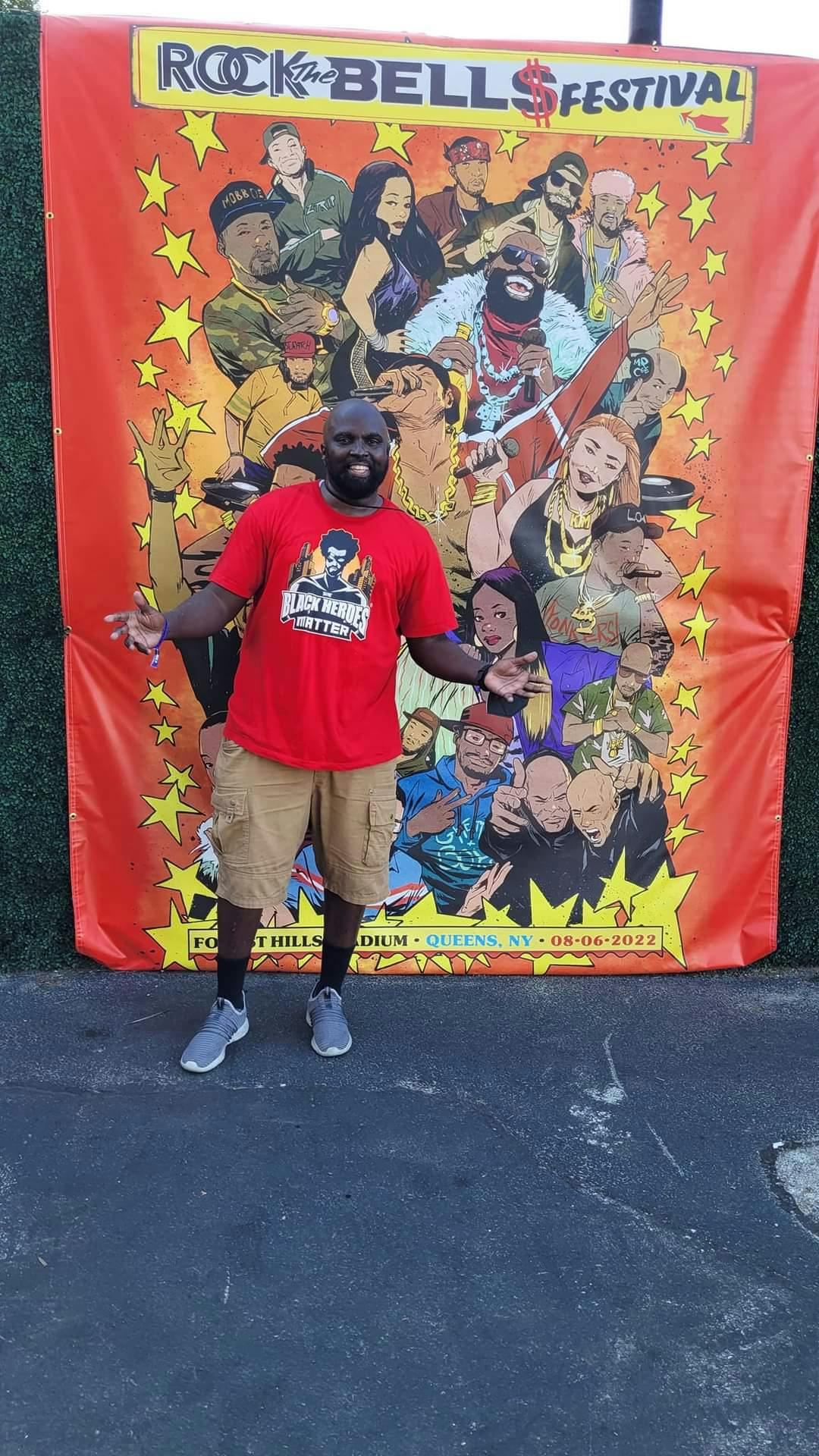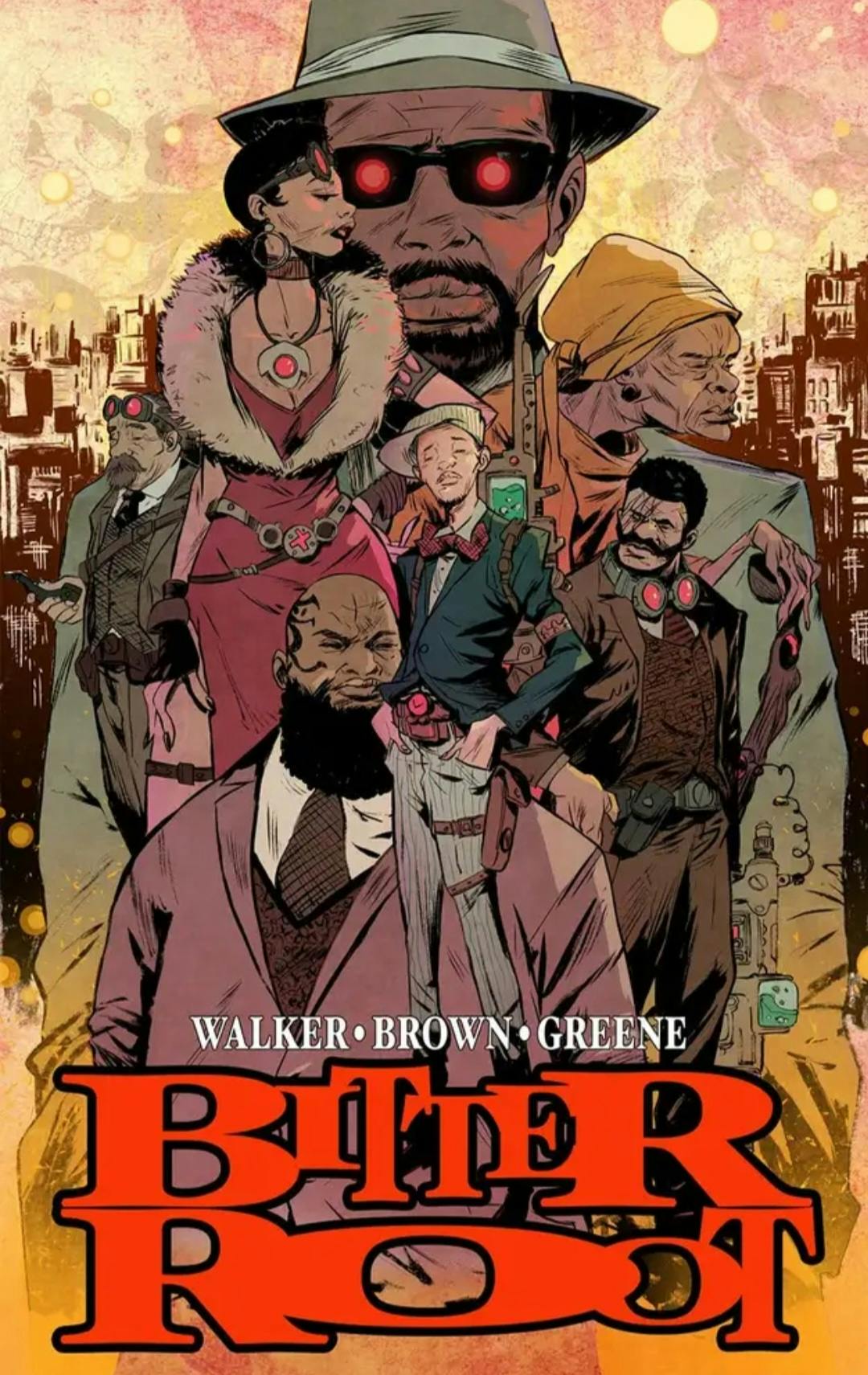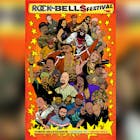
'Black Panther' Artist Sanford Greene On Marvel, Ryan Coogler & LL COOL J
'Black Panther' Artist Sanford Greene On Marvel, Ryan Coogler & LL COOL J
By Jay Quan
Published Wed, September 28, 2022 at 3:00 PM EDT
Graphic artist Sanford Greene is quite busy these days.
In addition to his artistic contribution to last month's Rock The Bells Festival, he is co creator of the Eisner Award-winning Bitter Root series; which started as a series of comics, and is undergoing a film adaptation directed by One Night In Miami director Regina King and produced by Black Panther director Ryan Coogler. Sanford's love and passion for art goes back to his early childhood.
"Like most folks who grow up and follow their craft whether it's sports or music; I started out fairly young," he explained. "I was drawing when I was five or six years old. My parents took interest in what I was doing—which is a blessing in disguise, because, around that time, this type of profession is a thing that wasn't noted."

Over the years, my interests spread to the actual characters and stories in the comics, and I developed an interest in the creators behind them—the Stan Lees and Jack Kirbys of the world..."
- Sanford Greene
In the pre-internet days of his youth, there wasn't much available information to support his interest in art, but Sanford's parents bought him story books and later comic books.
"They would buy me comics from the local K-Mart and I would copy images from those comics on paper and slowly but surely I got even more interested in drawing actual comics," he recalls. "I was a fan of just drawing in general, but the interest in the comics aspect of it really took shape around that time period. They didn't understand the comic world and industry and I didn't either, but I knew there had to be something out there because somebody was making these comics." Over the years, Sanford's interest spread to the actual characters and stories in the comics, and he developed an interest in the creators behind them—the Stan Lees and Jack Kirbys of the world.
DROP YOUR EMAIL
TO STAY IN THE KNOW


"I would try to correspond with these creators, but back then, there weren't a lot of resources to make those connections, then I discovered comic conventions, as they were starting to become more available throughout the country," he says. After visiting a few conventions, he learned that he needed to build a portfolio and he did so right around the time that he was entering college. Eventually, a small publisher saw Sanford's work and he was able to get published, and that was his break into the industry.
"This was all real world and no internet," says Greene. "There was a lot of standing in long lines at comic conventions for companies like Marvel, D.C. and Image Comics—which had just emerged at the time. Image Comics is the third-biggest company in the industry and it was founded by former Marvel creators who branched out. They were the first to branch out and become super successful publishing their own stories like [popular comics series] Spawn and things of that nature."
Sanford compares the energy of that independent success to the first days of Def Jam. "You would see these super stars all under one label LL COOL J, Public Enemy, Slick Rick and all that talent in one stable. It really made you want to be a part of that. Milestone Media was another one around that time. They created Static Shock, Hardware and Icon. These were all Black creators and it was huge coming up and seeing them on that level. Shout out to those guys: Dwayne McDuffie, rest in peace Denys Cowan, and all those folks were a huge influence on me."

When I was coming in the big opportunity was Marvel Comics. D.C Comics as well, but you wanted to make it at Marvel and draw Spider-Man and The Incredible Hulk."
- Sanford Greene
When the subject of creating original characters arises, Greene says the desire to create his own heroes and villains came much later.
"When I was coming in the big opportunity was Marvel Comics," he explains. D.C Comics, as well; but you wanted to make it at Marvel and draw Spider-Man and The Incredible Hulk. I didn't have the ambition of creating my own content at that time, but fast-forwarding to where I'm at now in my career the standard in the industry is to work for the bigger companies, and then branch off into your own."
Sanford recalls his earliest works. "I didn't mention Dark Horse Comics, but that was my very first work, doing some smaller characters for them. It's the equivalent of an MC getting a feature on a song and being introduced to everyone in that way. My Dark Horse work got the attention of D.C. and my first major job was drawing Superman. After doing that, Marvel noticed and I got the opportunity to do Spider-Man and X-Men. My biggest opportunity at Marvel was that we re introduced Luke Cage and Iron Fist and this was right before the Netflix series. That was big for us, with David Walker—who's also a co creator on our series Bitter Root. A sidebar is the scene in Luke Cage Season Two, I believe there's an intro with Luke and Iron Fist doing a fist-bump. That came directly from our series. We did that paying homage to the team."
Attention! Looks like the word is out! "Bitter Root "
— Sanford Greene (@sanfordgreene) August 19, 2022
Omnibus is comin'!!! Featuring a brand new short story that will tie the family's past history to the next chapter!!! Pre order NOW!@DavidWalker1201 @Cbrown803 @sxbond
💪🏿🔥👇🏿 pic.twitter.com/rAt6yC6Dl6
Sanford says that his opportunity to work with Regina King and Ryan Coogler stemmed from working on covers when Black Panther was relaunched, which was around the time that Luke Cage was relaunched.
"Marvel had me do lots of special covers or variants which tend to have more of an artistic flair than your average cover," he explained. "Those got the attention of Marvel Studios, so I did a promo piece paying homage to Marvel and Black Panther and they used that for promotional purposes for the first film. Funny enough I didn't know Coogler at all, but I definitely was a fan of his work." In what he describes as a full circle moment, Sanford says the movie (Black Panther) was released and he was honored to be involved and receive accolades for his work. But he felt that it would be cooler if it was work that he owned on the receiving end of the praise.
"It was the same with Luke Cage and Iron Fist. As a Black creator I felt there was a void and that once these characters dissipated, died out or moved on, that would be it," he said. "Me and the co-creators (of Bitter Root) agreed that it would be awesome to have something new, so we came up with the idea for the Bitter Root series because we pitched an idea to Marvel about a time travel story based around the time of the Harlem Renaissance and they didn't bite. Thank God they didn't—because we took that and developed it into what we have now."


In a twist of fate director Ryan Coogler was a fan of Bitter Root and he was purchasing the books at Golden Apple Comics in Los Angeles. "He would come in periodically and ask about the book," Sanford said. "He told the store owner to set aside any new Bitter Root volumes for him and he would come pick them up, or have an assistant pick them up. I got an email from the store owner telling me that Ryan Coogler loves the book and that he comes in monthly when they're released and buys them. The book does very well and we get an option deal from Legendary Pictures and that was announced in Hollywood Reporter and Coogler reached out to Legendary saying that he wanted Bitter Root. That's how we got to know him. Full circle: I worked on Black Panther, didn't get a chance to connect with him at all. I do my own thing now? We connect."
Sanford says that he always saw LL COOL J and other MCs as heroes.
"Most rappers, male and female, are heroes in our culture. They're larger than life," he explained. "If you look at groups like Wu-Tang Clan they play up the personas of comic characters. It was always second nature for me to look at it that way and Rock The Bells reached out to me wanting to connect - not on anything specifically, but they saw some of my work online. I'd done some pieces honoring artists who passed on, and they noticed that and wanted to collaborate. I pitched the idea of doing a collaboration, they liked it and it took off from there."
Check out Sanford's "1000" series on Webtoons and you'll soon see his work in Spider-Man: Into The Spider-Verse sequel.




